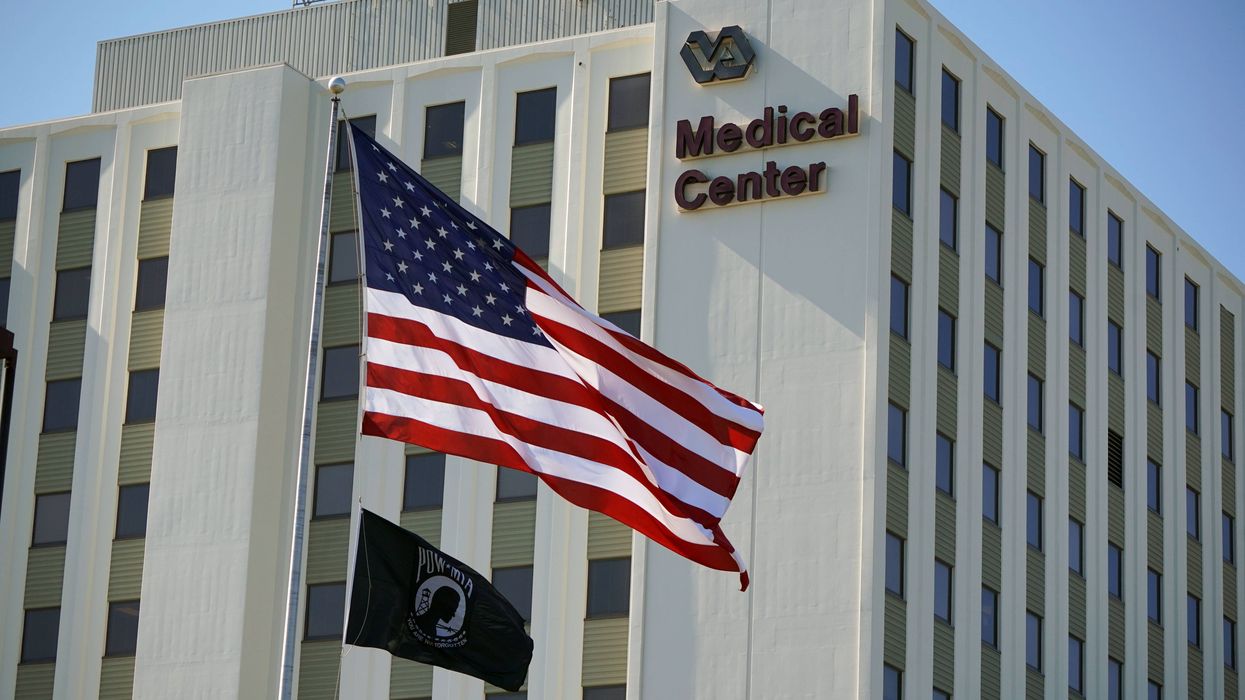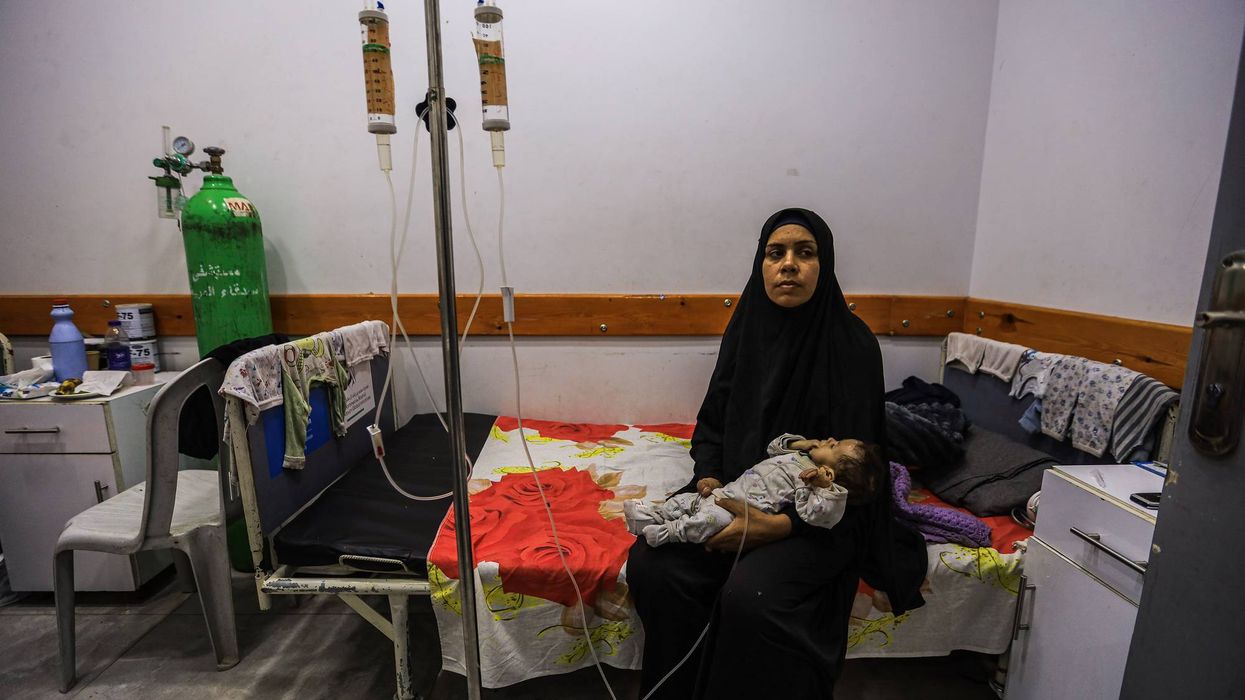'Dangerous and Cruel': Trump VA Quietly Bans Abortion Even for Rape and Health Risks
"This decision endangers the health, lives, and futures of the people who have served our country—and it proves what we've long warned: Trump and his allies won't stop until they've imposed a national abortion ban."
Defenders of reproductive rights on Tuesday responded with alarm after President Donald Trump's administration quietly imposed an abortion ban at the US Department of Veterans Affairs following a legal opinion penned by a deputy assistant attorney general.
After the 2022 Roe v. Wade reversal, the Biden administration allowed the VA to provide abortion counseling and care for service members and beneficiaries in cases of rape, incest, or if the pregnancy threatened the health of the patient. Once Trump returned to power, the department proposed a rule that would end those exceptions—though the VA would continue treating ectopic pregnancies and miscarriages, and allow abortions "when a physician certifies that the life of the mother would be endangered if the fetus were carried to term."
Although that rule hasn't taken effect, the US Department of Justice last week issued a memo in which Joshua Craddock of the Office of Legal Counsel concludes that the 2022 policy wasn't legally valid. The VA on Monday issued its own internal memo—obtained by the legal group Democracy Forward and reported by MS NOW—announcing immediate compliance with the DOJ's opinion, effectively implementing the proposed rule without finishing the formal process for doing so.
"DOJ's opinion states that VA is not legally authorized to provide abortions, and VA is complying with it immediately," Pete Kasperowicz, press secretary for the VA, confirmed to MS NOW, without answering further questions. "DOJ's opinion is consistent with VA's proposed rule, which continues to work its way through the regulatory process."
Skye Perryman, president and CEO of Democracy Forward, said in a statement that "denying veterans essential healthcare and abortion access—even in cases of rape or serious health risk—after they have sacrificed so much for our country is callous and inhumane."
Democracy Forward represented Minority Veterans of America in submitting a comment opposing the proposed rule, and Perryman pledged that "we will continue to fight its implementation now that it has been finalized."
"This abortion ban makes it clear that the Trump administration will always choose its dangerous political agenda, even if the cost is veterans and their families' access to essential care."
Minority Veterans of America co-founder and executive director Lindsay Church also denounced the "dangerous and cruel" policy shift.
"Veterans face unique challenges that make it critical for us to be able to access abortion care, including possible exposure to toxic chemicals, waiting to start a family until after our service, and experiencing sexual assault," she said. "Abortion should not be a political issue—it is necessary, life-saving medical care, and denying this care will put veterans and their loved ones' lives in danger."
Fatima Goss Graves, president and CEO of the National Women's Law Center, warned that "the Trump administration is confirming what we've always known: its promise to leave abortion to the states was a lie. No one is safe from their anti-abortion crusade, not even our nation's veterans."
Goss Graves called on federal lawmakers to "pass legislation to reverse this harmful new policy and reinstate abortion access to all veterans and their loved ones who depend on the VA for care," though such a bill is unlikely to advance in the current Republican-controlled Congress.
Reproductive Freedom for All president and CEO Mini Timmaraju similarly declared that "this decision endangers the health, lives, and futures of the people who have served our country—and it proves what we've long warned: Trump and his allies won't stop until they've imposed a national abortion ban."
Nancy Northup, president and CEO at the Center for Reproductive Rights, argued that "everyone should be appalled by this heartless policy. President Trump said he would leave abortion to the states, but he continues to seize new opportunities to restrict it nationally."
This means the VA won't cover abortions EVEN in the case of rape, incest, or serious threat to the health of the patient. The DOJ memo was authored by Josh Craddock, one of the chief legal advocates for fetal personhood, i.e. imposing a nationwide abortion ban through the courts.
[image or embed]
— Mark Joseph Stern (@mjsdc.bsky.social) December 23, 2025 at 2:18 PM
Planned Parenthood Federation of America highlighted that "this ban goes into effect as the Trump administration and its allies in Congress continue a full-scale attack on access to sexual and reproductive health: stripping veterans of essential healthcare, slashing Medicaid, and 'defunding' Planned Parenthood."
Alexis McGill Johnson, the group's president and CEO, said that "this abortion ban makes it clear that the Trump administration will always choose its dangerous political agenda, even if the cost is veterans and their families' access to essential care."
Earlier this year, House Committee on Veterans' Affairs Ranking Member Mark Takano (D-Calif.) and Senate Committee on Veterans' Affairs Ranking Member Richard Blumenthal (D-Conn.) led over 230 of their colleagues in submitting a public comment against the Trump administration's proposed rule. Takano and other members of the House panel also spoke out on Tuesday.
"As a country, we made a solemn promise to honor veterans' service and ensure they receive the healthcare they have earned. Veterans should be able to trust that promise and know they can walk into a VA medical center and receive the care they need," said Takano. "Instead of trusting veterans to make the healthcare decisions that are best for them, VA is allowing political opinion to supplant its duty to veterans."
"Instead of allowing veterans to discuss all their healthcare options openly and honestly with their providers, VA has decided that the government should be in charge of making healthcare decisions, even in matters of life and death," he continued. "And instead of fulfilling its duty to provide needed healthcare to veterans, VA has refused to acknowledge the unique and complex healthcare needs of veterans who are more likely to have complex health conditions that can increase the risks associated with pregnancy. Veterans fought for our rights. Now it's our responsibility to fight for theirs."


